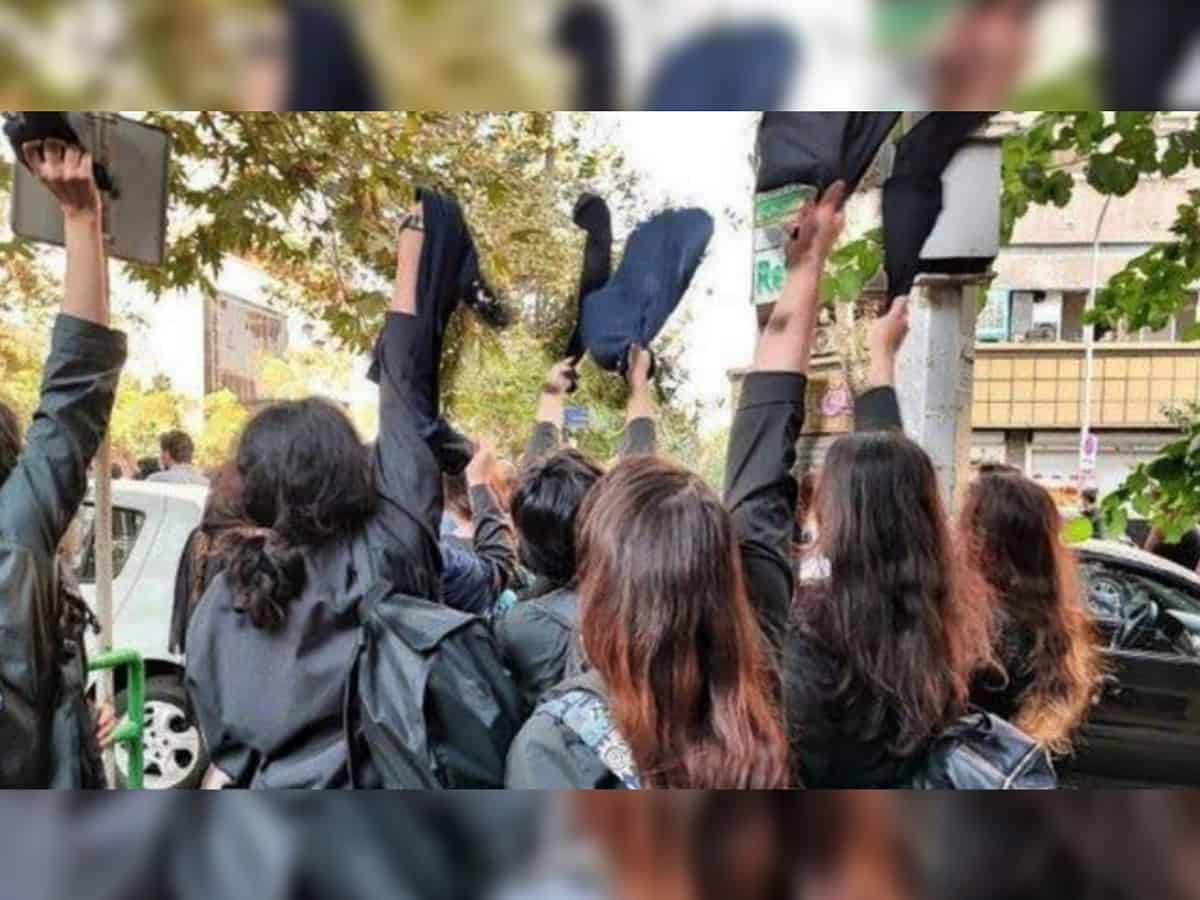
Tehran: Authorities in Iran have been reportedly holding school students who were arrested for anti-Hijab protests in ‘psychological centers’ to prevent them from becoming “antisocial characters,” the country’s education minister said on Tuesday.
In an interview with an independent reformist newspaper, Iranian Education Minister Yousef Nouri confirmed that some school students had already been arrested. He said they were sent to “psychological institutions” which “embrace students” with the aim to “reform and re-educate” them to prevent “anti-social” behaviour.
Iran has been rocked by protests by angry women and students after a young woman named Mahsa Amini died after being thrashed by the moral police for not wearing a hijab. Many protesters have since then taken-off their hijabs and have faced violent crackdowns by security forces in the biggest wave of social unrest to grip Iran in almost three years.
“It is possible that these students are ‘anti-social figures’ and we want to reform them,” Yousef Nouri told Sharq newspaper. He added that students can return to their classrooms after getting “reformed.” The Minister of Education in Iran could not specify an exact number of the number of detained students, saying, “There are not many of them. I cannot give exact figures.”
The Iranian-American artist, Nazanin Boniadi, had re-published the Iranian Minister of Education’s statements about the detention of students in psychological reform centers, and wrote: “It is a shame. What does the United Nations want to do about it?”
Several videos and photos circulated on Twitter showing Iranian police arriving at schools to arrest children. This comes in the wake of widespread protests in schools and universities in the country, especially girls and young women.
After a campaign of arrests of students that affected several universities in Iran, especially in Tehran, it was the turn of secondary schools.
Khosrow Kalbasi-Isfahani, a BBC journalist, shared a video originally posted by the account ‘1500tasvir’, on October 9, which showed security forces attacking several schools in Iran in an attempt to arrest schoolgirls.
Beginning of the Iranian protests
The protests began when 22-year-old Iranian-Kurdish Mahsa Amini died after she was arrested by the ‘morality police’ for allegedly improperly wearing a headscarf. The protests that followed swept across Iran, with Iranian women at the fore, chanting the slogans of women: life, freedom.
Girls and women across Iran have played a vital role in the demonstrations, and in recent weeks have protested in schools, universities and on the streets. Security forces cracked down on the protesters, with a rights group saying on Sunday, October 9, that 185 people, including 19 children, were killed by police and government-affiliated militias.
UNICEF calls for protection Of children amid Iran’s crackdown
The United Nations Children’s Fund (UNICEF) on Monday called for the protection of children and adolescents amid public unrest in Iran, which has entered its third week.
“We are deeply concerned by continued reports of the killing, wounding and detention of children and adolescents amid the ongoing public unrest in Iran,” UNICEF said in a statement.
